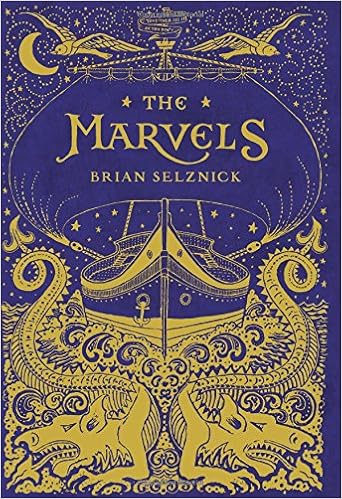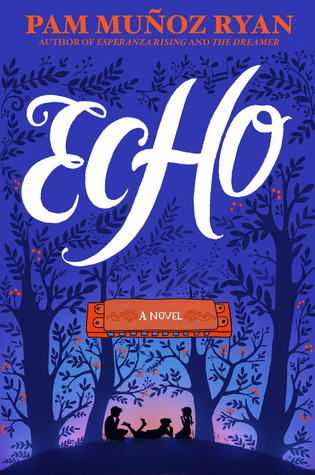Most of my students love The Hunger Games, it seems to almost be a rite of passage to have read this series. I see them start the first book and then this fever comes over them as they race through the pages waiting to find out the fate of the characters. Hunger Games fever is a real phenomena I think. Yet, the sadness that overcomes them when they finish the series is also palpable. Where do they turn to next? What is the next series that they can fall in love with? Here are a few suggestions.

Pivot Point and its sequel Split Second by Kasie West is hands down one of my favorites duos ever. And yet most have not heard of it or read it. This is a travesty. I had this in my 5th grade library and in my 7th, it is slightly mature for 5th graders but completely fine for 7th. I still keep hoping that Kasie West will write a third book although she has said she won’t.
From Amazon:
Addison Coleman’s life is one big “What if?” As a Searcher, a special type of clairvoyant, whenever Addie is faced with a choice, she is able to look into the future and see both outcomes. So when her parents tell her they are getting a divorce and she has to pick who she wants to live with, a Search has never been more important.
In one future Addie is living with her mom in the life she’s always known and is being pursued by the most popular guy in school. In the other she is the new girl in school, where she falls for a cute, quiet artist. Then Addie finds herself drawn into a murder investigation, and her fate takes a darker turn. With so much to lose in either future, Addie must decide which reality she’s willing to live through . . . and who she’s willing to live without.

The Dissonance series by Erica O’Rourke is another often overlooked series that I absolutely love. Two books are out in the series at the moment but the battle is only getting bigger and better in the books. This is also fine for mature 5th grade readers and up.
From Amazon:
Every time someone makes a choice, a new, parallel world is spun off the existing one. Eating breakfast or skipping it, turning left instead of right, sneaking out instead of staying in bed—all of these choices create alternate universes in which echo selves take the roads not traveled. Del knows this because she’s a Walker, someone who can navigate between the worlds, and whose job is to keep the dimensions in harmony.
But Del’s decisions have consequences too. Even though she’s forbidden from Walking after a training session goes horribly wrong, she secretly starts to investigate other dissonant worlds. She’s particularly intrigued by the echo versions of Simon Lane, a guy who won’t give her the time of day in the main world, but whose alternate selves are uniquely interested. But falling for Simon draws Del closer to a truth that the Council of Walkers is trying to hide—a secret that threatens the fate of the entire multiverse.

All Our Yesterday’s by Cristin Terrill is not a series, but it should be. This book took my breath away when I read it and have found an appreciative audience with my 7th graders as well. This is a page turner.
From Amazon:
Imprisoned in the heart of a secret military base, Em has nothing except the voice of the boy in the cell next door and the list of instructions she finds taped inside the drain.
Only Em can complete the final instruction. She’s tried everything to prevent the creation of a time machine that will tear the world apart. She holds the proof: a list she has never seen before, written in her own hand. Each failed attempt in the past has led her to the same terrible present- imprisoned and tortured by a sadistic man called the doctor while war rages outside.
Marina has loved her best friend, James, since they were children. A gorgeous, introverted science prodigy from one of America’s most famous families, James finally seems to be seeing Marina in a new way, too. But on one disastrous night, James’s life crumbles apart, and with it, Marina’s hopes for their future. Marina will protect James, no matter what. Even if it means opening her eyes to a truth so terrible that she may not survive it . . . at least, not as the girl she once was. Em and Marina are in a race against time only one of them can win.

Joelle Charbonneau knows how to write a great book, her new book Need is a must add to any 7th grade classroom, but I first fell in love with her writing by reading The Testing series. This is also fine for mature 5th graders and up (Need probably is not).
From Amazon:
It’s graduation day for sixteen-year-old Malencia Vale, and the entire Five Lakes Colony (the former Great Lakes) is celebrating. All Cia can think about—hope for—is whether she’ll be chosen for The Testing, a United Commonwealth program that selects the best and brightest new graduates to become possible leaders of the slowly revitalizing post-war civilization. When Cia is chosen, her father finally tells her about his own nightmarish half-memories of The Testing. Armed with his dire warnings (”Cia, trust no one”), she bravely heads off to Tosu City, far away from friends and family, perhaps forever. Danger, romance—and sheer terror—await.

The Shattered series by Tahereh Mafi is another great contender for post Hunger Games reading. There certainly are similarities between the series but it still has a unique concept revolving around the main character.
From Amazon:
I have a curse.
I have a gift.
I’m a monster.
I’m more than human.
My touch is lethal.
My touch is power.
I am their weapon.
I will fight back.
No one knows why Juliette’s touch is fatal, but The Reestablishment has plans for her. Plans to use her as a weapon. But Juliette has plans of her own. After a lifetime without freedom, she’s finally discovering a strength to fight back for the very first time—and to find a future with the one boy she thought she’d lost forever.
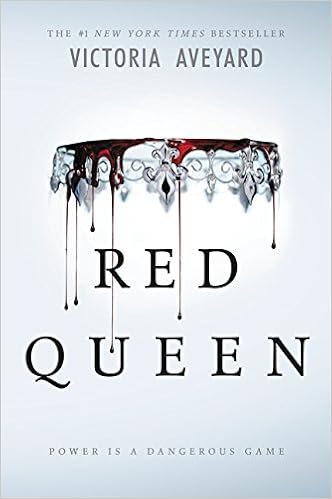
I have been gushing about Red Queen by Victoria Aveyard to anyone who will listen. Yes, it reminds me of so many other books but at the same time it is so good. So good. I was thrilled to put this into the hands of my 7th graders this week. Only drawback is that this is the only book out so far.
From Amazon:
Mare Barrow’s world is divided by blood–those with common, Red blood serve the Silver- blooded elite, who are gifted with superhuman abilities. Mare is a Red, scraping by as a thief in a poor, rural village, until a twist of fate throws her in front of the Silver court. Before the king, princes, and all the nobles, she discovers she has an ability of her own.
To cover up this impossibility, the king forces her to play the role of a lost Silver princess and betroths her to one of his own sons. As Mare is drawn further into the Silver world, she risks everything and uses her new position to help the Scarlet Guard–a growing Red rebellion–even as her heart tugs her in an impossible direction. One wrong move can lead to her death, but in the dangerous game she plays, the only certainty is betrayal.

I don’t think it is possible to have a post like this without mentioning the Legend series by Marie Lu. Yes, many have already read it and passed it on but there are still so many that haven’t. This is also a great entry book into science fiction for students who might not think the genre is for them.
From Amazon:
What was once the western United States is now home to the Republic, a nation perpetually at war with its neighbors. Born into an elite family in one of the Republic’s wealthiest districts, fifteen-year-old June is a prodigy being groomed for success in the Republic’s highest military circles. Born into the slums, fifteen-year-old Day is the country’s most wanted criminal. But his motives may not be as malicious as they seem.
From very different worlds, June and Day have no reason to cross paths – until the day June’s brother, Metias, is murdered and Day becomes the prime suspect. Caught in the ultimate game of cat and mouse, Day is in a race for his family’s survival, while June seeks to avenge Metias’s death. But in a shocking turn of events, the two uncover the truth of what has really brought them together, and the sinister lengths their country will go to keep its secrets.

The Lunar Chronicles series by Marissa Meyer, Cinder is the first book shown here, is so loved in our classroom that I have had to repurchase it a few times. And yes, we are counting down to November 15th when Winter comes out. This book is equally loved by 5th and 7th graders and is just one of those series where you want to read the whole thing in one sitting.
From Amazon:
Humans and androids crowd the raucous streets of New Beijing. A deadly plague ravages the population. From space, a ruthless lunar people watch, waiting to make their move. No one knows that Earth’s fate hinges on one girl. . . .
Cinder, a gifted mechanic, is a cyborg. She’s a second-class citizen with a mysterious past, reviled by her stepmother and blamed for her stepsister’s illness. But when her life becomes intertwined with the handsome Prince Kai’s, she suddenly finds herself at the center of an intergalactic struggle, and a forbidden attraction. Caught between duty and freedom, loyalty and betrayal, she must uncover secrets about her past in order to protect her world’s future.

Another modern day classic series is the Unwind series by Neal Shusterman. I first discovered this last year and had students use it in a book club, it was amazing.
From Amazon:
In America after the Second Civil War, the Pro-Choice and Pro-Life armies came to an agreement: The Bill of Life states that human life may not be touched from the moment of conception until a child reaches the age of thirteen. Between the ages of thirteen and eighteen, however, a parent may choose to retroactively get rid of a child through a process called “unwinding.” Unwinding ensures that the child’s life doesn’t “technically” end by transplanting all the organs in the child’s body to various recipients. Now a common and accepted practice in society, troublesome or unwanted teens are able to easily be unwound.
With breathtaking suspense, this book follows three teens who all become runaway Unwinds: Connor, a rebel whose parents have ordered his unwinding; Risa, a ward of the state who is to be unwound due to cost-cutting; and Lev, his parents’ tenth child whose unwinding has been planned since birth as a religious tithing. As their paths intersect and lives hang in the balance, Shusterman examines complex moral issues that will keep readers turning the pages until the very end.
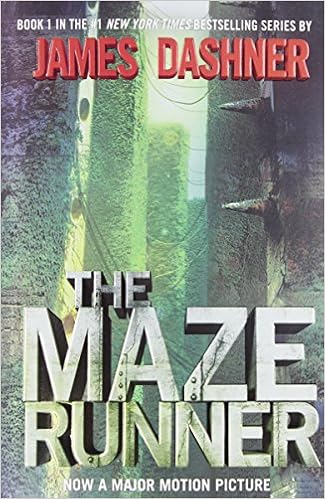
Of course, a list like this would be woefully incomplete if it weren’t for The Maze Runner by James Dashner. I don’t know if I even need to say much about this series except that I will never forget the 5th grader that told me to read it. Thank you so much.
From Amazon:
If you ain’t scared, you ain’t human.
When Thomas wakes up in the lift, the only thing he can remember is his name. He’s surrounded by strangers—boys whose memories are also gone.
Nice to meet ya, shank. Welcome to the Glade.
Outside the towering stone walls that surround the Glade is a limitless, ever-changing maze. It’s the only way out—and no one’s ever made it through alive.
Everything is going to change.
Then a girl arrives. The first girl ever. And the message she delivers is terrifying.
Remember. Survive. Run.
If you like what you read here, consider reading my book Passionate Learners – How to Engage and Empower Your Students. The 2nd edition and actual book-book (not just e-book!) comes out September 22nd from Routledge, but rumor has it that it is out on Kindle already!
Filed under:
being a teacher,
books,
Literacy 









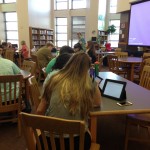



























 Takeo Gōda is a first year high school student, and due to his intensity and intimidating size (he is BIG, think pro-wrestler-big) he doesn’t have much luck with girls. Every crush he has ever had immediately falls for his super-handsome best friend, Makoto Sunakawa. This all changes when he meets Rinko Yamato on the train to school.
Takeo Gōda is a first year high school student, and due to his intensity and intimidating size (he is BIG, think pro-wrestler-big) he doesn’t have much luck with girls. Every crush he has ever had immediately falls for his super-handsome best friend, Makoto Sunakawa. This all changes when he meets Rinko Yamato on the train to school. Sakura Mamiya can see ghosts, and she is not happy about it. She finds the whole concept of her “special powers” awkward so most of the time she ignores anything supernatural that crosses her path… until she realizes that the new boy in her class is invisible to everyone but her. . .
Sakura Mamiya can see ghosts, and she is not happy about it. She finds the whole concept of her “special powers” awkward so most of the time she ignores anything supernatural that crosses her path… until she realizes that the new boy in her class is invisible to everyone but her. . .








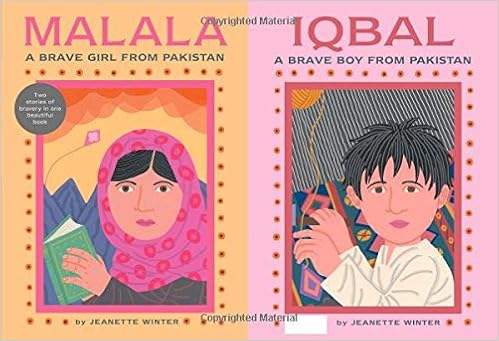
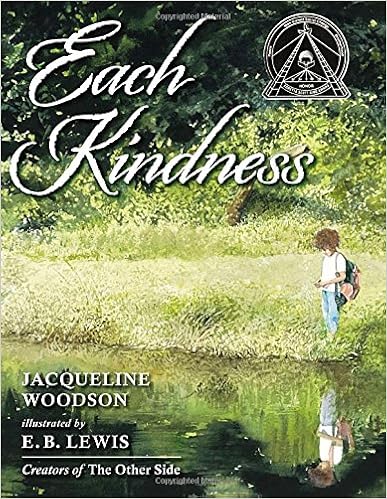








 I Yam A Donkey
I Yam A Donkey


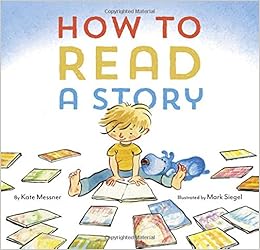










 I remember seeing a preview for
I remember seeing a preview for 

 It is completely appropriate that
It is completely appropriate that 
